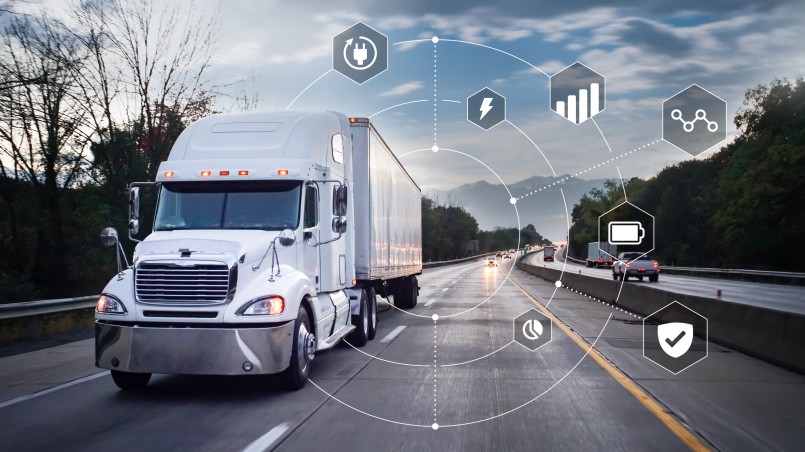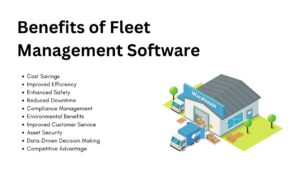Introduction
In the ever-evolving landscape of fleet management, telematics has emerged as a game-changer. Telematics refers to the integration of telecommunications and informatics. It helps track and manage vehicles in real-time. It has transformed the way businesses manage their fleets, offering deep insights and control. This article delves into why telematics is relevant in modern fleet management. It also explores its key aspects and provides practical solutions. Thus, provides best advice for businesses looking to enhance their operations.
The Relevance of Telematics
Fleet management is not what it used to be. Gone are the days of manual record-keeping and guesswork. In the modern era, businesses need to be efficient, environmentally responsible, and cost-effective. Telematics plays a pivotal role in achieving these goals. Here’s why it’s relevant:
1. Real-time Vehicle Tracking
Telematics provides real-time tracking of commercial fleet. This means we can track the exact location, speed, and route of every vehicle. This makes things safer and lets us optimize route, which cuts down on fuel use and journey time.
2. Data-Driven Decision Making
Telematics is a treasure trove of data. It offers insights into driver behavior, fuel consumption, and maintenance needs. With the right analysis, we can make informed decisions to improve efficiency and cut costs.
3. Safety and Compliance
Ensuring the safety of drivers and compliance with regulations is paramount. Telematics systems can track driver behavior, such as speeding, harsh braking, and acceleration. This data helps train drivers and maintain a safe and compliant fleet.
4. Environmental Responsibility
Reducing your fleet’s carbon footprint is not a moral imperative; it’s a legal rule. Telematics can help measure and reduce fuel consumption, lower emissions, and promote a greener fleet.

Key Aspects of Telematics
Now that we’ve established the relevance of telematics, let’s delve into its key aspects:
1. GPS Tracking
GPS tracking is at the core of telematics. It provides real-time location data, helping you optimize routes and ensure timely deliveries. For instance, a courier company using telematics can reroute a vehicle in response to traffic or weather conditions. This thereby improves customer satisfaction.
2. Driver Behavior Monitoring
Telematics systems can track and record driver behavior. This can help identify areas for improvement and enhance safety. For example, a company with delivery trucks can incentivize safe driving practices to reduce accidents.
3. Maintenance Alerts
Telematics can send maintenance alerts based on vehicle diagnostics. This approach to maintenance can prevent breakdowns, reduce downtime, and improve the fleet. For instance, a long-haul trucking company can save on repair costs by addressing issues before they escalate.
4. Fuel Efficiency
Reducing fuel costs is a top priority for any fleet manager. Telematics can help by monitoring fuel consumption, idling times, and fuel-efficient driving. For instance, a taxi service can cut fuel expenses by coaching drivers to cut idling and take more efficient routes.
Practical Solutions and Advice
Now that we’ve covered the key aspects of telematics, let’s look at practical solutions and advice for businesses:
1. Choose the Right Telematics System
Not all telematics systems are equal. Consider specific needs and budget when selecting a system. Ensure it provides the data and features crucial for the fleet.
2. Data Analysis
Collecting data is one thing, but making sense of it is another. Invest in data analysis tools or professionals who can turn raw data into actionable insights.
3. Driver Training
Use the data collected on driver behavior to provide targeted training. A well-trained driver is a safer, more efficient driver.
4. Regular Maintenance
Don’t ignore maintenance alerts. Regular maintenance not only saves money but also ensures the safety and reliability of your vehicles.
5. Set Clear Objectives
Establish clear objectives for your telematics system. Focused on reducing fuel costs, improving safety, or enhancing efficiency? Proper objectives will guide your strategies.

Telematics has become indispensable in modern fleet management. It empowers businesses to make data-driven decisions, enhance safety, and reduce operational costs. Get the most out of this technology by picking the right telematics system, looking at the data, and focusing on driver training and repair. The future of fleet management is here, and it’s telematics.
Ready to revolutionize fleet management with telematics? Contact Transportsimple for a free consultation. Take the first step towards a safer, more efficient, and environmentally responsible fleet with Transportsimple






Leave a Reply